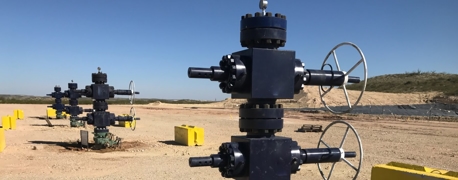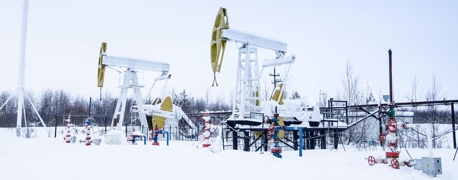Why Oilfield Truck Accidents Happen So Often

The oilfield poses numerous risks on a daily basis. Drilling for oil requires physical strength and coordination, some knowledge of basic mechanical engineering, and higher-than-normal risk tolerance. Heat (both from oil drilling and the Sun) and isolation mean that medical emergencies are likely to happen at any time without quick access to a hospital.
The conditions for the oilfield, particularly for truckers, are also precarious. Tight spaces for oil wells require fine control of a massive, 80,000-pound machine—a machine that comes with massive blindspots. Additionally, operators have to navigate through dirt, mud, and other specialized obstacles on a daily basis. Even the commute is more dangerous than in other industries. Long shifts of exhausting physical labor can create a serious risk of falling asleep at the wheel. Some workers have suffered through multiple accidents where they (or a colleague) fell asleep at the wheel on the way to or from work.
The single largest cause of fatalities in the oilfield industry is highway crashes, per a New York Times report on the subject. According to the CDC, roadway incidents represent nearly 1 in 4 oilfield fatalities—nearly twice the fatality rate for drilling or well maintenance. But why is highway transportation so dangerous for oilfield workers?
The Risks of Driving While Tired in the Oilfields
One sleep study compared the effects of fatigue and drinking pertaining to driver performance, and researchers found that driving after staying awake for 18 hours was comparable to driving with a .05% BAC. Staying away for 24 hours led to a driving performance equal to .10% BAC—well over the legal limit. Given how often oilfield workers are driving home after all-day shifts, it's clear why truck accidents occur far more often in the oilfield industry than elsewhere.
Further Consequences of Fatigue on Oilfield Workers
Fatigue not only influences the incidence of accidents, but it also decreases productivity and performance in the oilfields. Research suggests that fatigue contributes to an increase in missed safety cues, slower reaction times, and an overall decrease in work quality. This, in turn, could lead to costly mistakes, further exacerbating the problem and contributing to an increased risk of accidents.
Moreover, fatigue may lead to chronic health conditions in oilfield workers, such as cardiovascular diseases, metabolic disorders, and mental health issues, among others. These health conditions further compound the challenges faced by workers, potentially leading to a higher risk of accidents and a diminished quality of life.
Introducing Regular Safety Audits and Hazard Identification
Regular safety audits and hazard identification can help mitigate risks in the oilfield. These audits not only look into the adherence to safety regulations but also analyze the prevalent work culture, daily work practices, and the physical and mental well-being of workers. They can identify potential sources of risks, such as faulty equipment, risky behaviors, and signs of chronic fatigue among workers.
On the other hand, hazard identification strategies can identify new or overlooked risks and devise plans to control them. This includes factors like extreme weather conditions, volatile materials, as well as evolving work processes that may introduce new hazards.
Implementing these measures requires a comprehensive understanding of oilfield operations and the unique challenges they pose. Therefore, oil companies should consider investing in the necessary expertise to conduct these audits and hazard identifications effectively.
The Impact of Better Driver Training in the Oilfield Industry
The cumulative effects of fatigue and the rigors of oilfield trucking have a profound impact on long-term safety. While there's not much data on the negative impact of oilfield trucking, we have some idea of what might happen if companies invested more deeply into training and prevention. In a paper presented at the E&P Environmental and Safety Conference in 2007, researchers showed the results of a training program specifically geared toward operators in the oilfield industry.
The training included:
- Fatigue management to prevent the effects of drowsy driving
- Driver training for tight oil well spaces and dirt roads
- Driving simulators for common oilfield hazard scenarios
These training choices indicate the chief concerns for oilfield workers: navigation, fatigue, and lack of specialized experience.
The results of the training experiment were dramatic. As expected, the drivers who underwent the new training program experienced fewer accidents than their colleagues who didn't. However, even the accidents those drivers did experience were less severe than other drivers' accidents, showing that training can actually affect the outcome of certain collisions. In the end, the drivers with more training made up 40% of the total drivers under observation, but they represented only 4% of the total accident costs.
Who Is Responsible When an Oilfield Worker Dies on the Road?
So, there's a clear problem in the oilfield industry: workers face life-threatening hazards from the moment they leave their driveways to the moment they return at night. The worst of those hazards—drowsy driving—is entirely preventable. The question is, what can be done to make life safer in the oilfields? And who can be held responsible for making it happen?
Ultimately, the oil companies scheduling shifts are the ones responsible for ensuring their workers have enough energy to commute and work safely.
Navigating the Path to Safer Oilfields
The prevailing hazards in the oilfield industry, particularly in trucking, highlight a critical need for stringent safety measures, innovative approaches to worker training, and increased accountability. The risks posed by fatigue, physical demands of the job, and the challenging work conditions underline a significant problem, one that requires a comprehensive solution.
The adverse effects of fatigue on worker productivity and health, combined with the increased risk of accidents, underscore the necessity of proper fatigue management and rest periods. Regular safety audits and hazard identification strategies also form an essential part of this multi-faceted solution, helping to spot potential risks and implement measures to mitigate them.
Investing in thorough training programs for workers is another crucial piece of the puzzle. As the study from the E&P Environmental and Safety Conference illustrates, such programs can dramatically reduce accident rates and the severity of accidents when they do occur. By including elements such as fatigue management, navigation, and scenario-based training, these programs can equip workers with the skills they need to safely navigate the demanding oilfield environment.
But the responsibility of ensuring the safety of oilfield workers does not fall on the shoulders of the workers alone. Oil companies, regulatory bodies, and industry associations all have roles to play. Oil companies need to prioritize safety over cost savings, scheduling shifts in a manner that ensures their workers aren't fatigued, and providing necessary training to their workforce. Regulatory bodies must enforce stringent safety regulations and oversee compliance to ensure these standards are upheld. Industry-wide best practices should be established and adhered to, creating a culture of safety in the oilfield industry.
In the end, the frequency of oilfield truck accidents is not just a statistic—it's a call to action. And while the oilfield industry has inherent risks, with coordinated efforts and responsible practices, we can ensure that these risks are minimized and that every worker returns home safely at the end of their shift. The journey to safer oilfields is a challenging one, but it's a road that we must navigate for the well-being of those who work tirelessly to power our world.
- Categories


